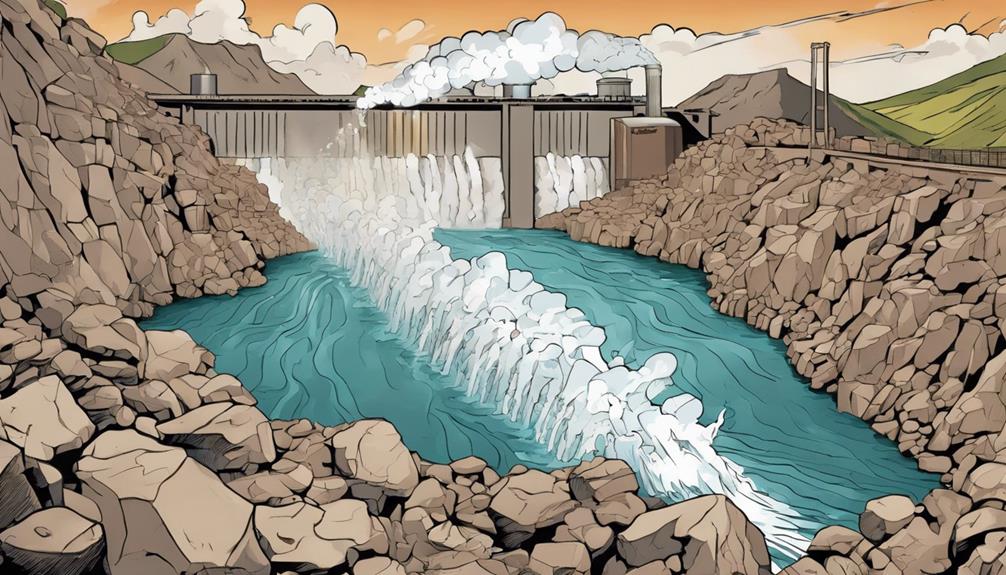When considering hydroelectric power and geothermal energy, hydroelectric power gains power from water movement in dams, while geothermal energy taps into Earth's heat. The first relies on water flow, the latter on the planet's warmth. Want to learn more about how these two energy sources differ in environmental impact, efficiency rates, and even their global distribution?
Key Takeaways
- Hydroelectric power relies on water movement in dams, while geothermal energy taps into Earth's heat source.
- Geothermal energy is weather-independent, whereas hydroelectric power depends on the continuous water cycle.
- Geothermal energy has a minimal ecological footprint and doesn't emit greenhouse gases, unlike hydroelectric power.
- Hydroelectric power can disrupt natural river flows, while geothermal energy doesn't disturb habitats or river flows.
- Geothermal energy accounts for less than 1% of US electricity production, whereas hydroelectric power contributes 7% to US electricity generation.
Hydroelectric Power Overview
Hydroelectric power is harnessed through the movement of water in dams, utilizing the energy from falling or flowing water to turn turbines. This form of renewable energy relies on the continuous cycle of water and is greatly impacted by factors such as rainfall and water availability.
Hydroelectric power plants are known for their high efficiency rates and their capacity to generate large-scale power. Despite its benefits, the construction of hydroelectric dams can have negative consequences, disrupting natural river flows and altering ecosystems and fish habitats. However, despite these environmental concerns, hydroelectric power remains a widely used energy source globally.
Its ability to provide significant amounts of power efficiently has made it a key player in the renewable energy sector, contributing to meeting the energy demands of many countries while also raising important discussions about environmental conservation.
Geothermal Energy Overview
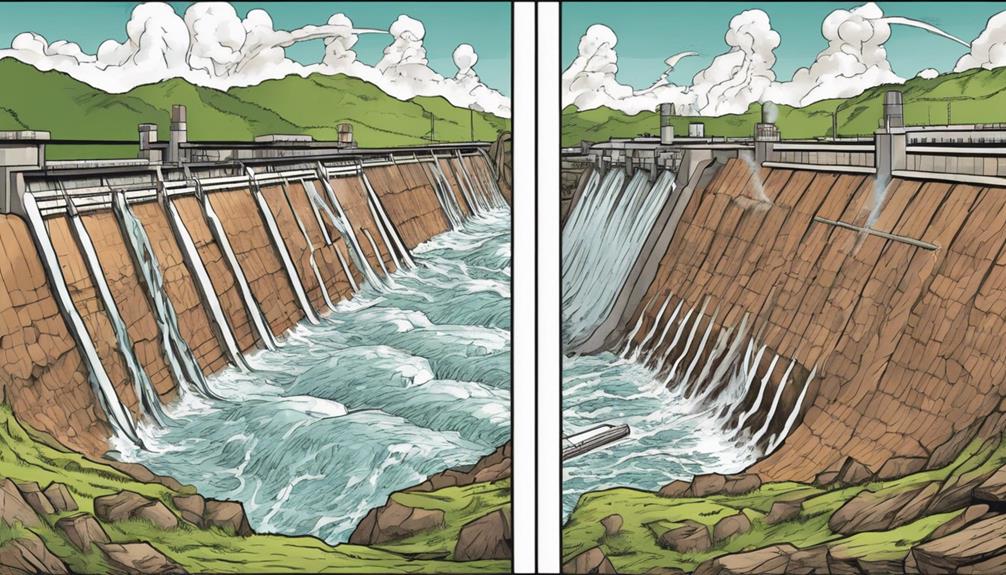
Geothermal energy taps into the Earth's heat source, utilizing it for power generation. This method involves extracting energy from underground sources, providing a reliable and sustainable energy option.
When comparing environmental impact, geothermal energy stands out for its minimal ecological footprint.
Earth's Heat Source
Harnessing the Earth's internal heat source, geothermal energy provides a sustainable and reliable source of power. This energy is derived from the heat within the Earth's interior, offering various benefits and advantages:
- Geothermal energy can be utilized for heating purposes, providing warmth for residential, commercial, and industrial applications.
- It can also be converted into electricity through geothermal power plants, generating clean and renewable energy.
- Geothermal energy stands out as a consistent energy source since it isn't reliant on weather conditions, ensuring a steady and reliable power supply.
Underground Energy Extraction
Exploring beneath the Earth's surface, underground energy extraction techniques play an essential role in harnessing the abundant geothermal energy for various applications.
Geothermal energy is generated by tapping into the heat stored within the Earth's interior using methods such as drilling wells to access hot water or steam. This heat is then utilized for heating purposes directly or converted into electricity in geothermal power plants.
Unlike many other renewable energy sources, geothermal energy extraction isn't weather-dependent, providing a consistent and reliable energy source.
By harnessing the natural heat reservoirs within the Earth's crust, geothermal energy contributes to sustainable energy production with minimal environmental impact.
The utilization of underground energy extraction techniques for geothermal energy highlights the innovative ways in which we can leverage the Earth's resources for clean and efficient power generation.
Environmental Impact Comparison
Compared with hydroelectric power, geothermal energy stands out for its minimal environmental impact and sustainable energy production methods. Geothermal energy has a lower environmental impact compared with hydroelectric power, mainly due to its low emissions and small land footprint. Here are some key points to keep in mind:
- Geothermal power plants don't disturb natural habitats or river flows, unlike hydroelectric dams.
- Geothermal energy production doesn't contribute to greenhouse gas emissions, making it a clean and environmentally friendly energy option.
- Unlike hydroelectric reservoirs that can lead to methane emissions, geothermal energy production is sustainable and doesn't pose a risk to the environment.
Environmental Impact Comparison
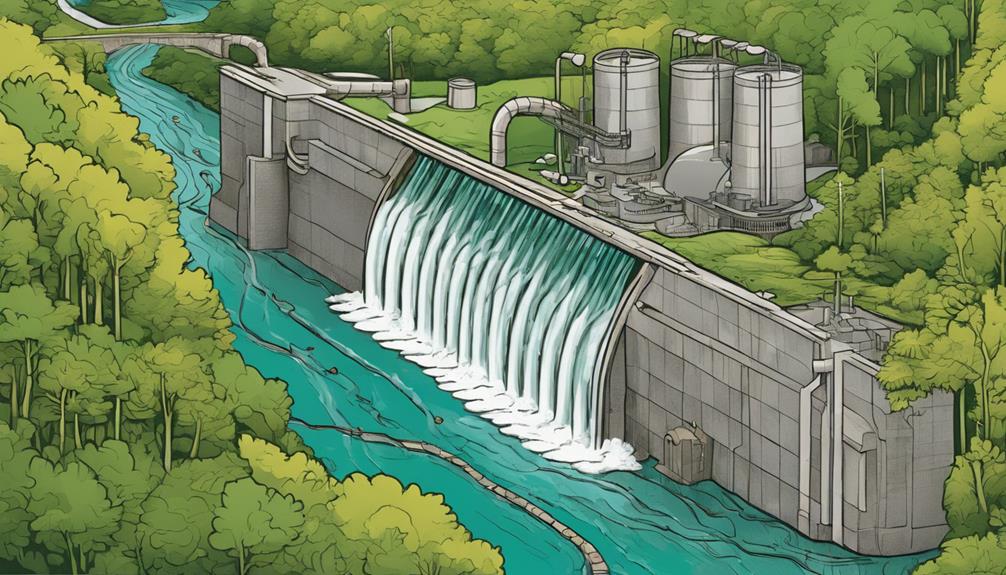
When considering the environmental impact of hydroelectric power and geothermal energy, it's evident that they have distinct implications on ecosystems and natural habitats.
Hydroelectric power, through dam construction and reservoir creation, can alter ecosystems and fish habitats, disrupting natural river flows and impacting downstream areas. This can lead to biodiversity loss and water quality issues. Additionally, hydroelectric reservoirs may contribute to methane emissions, a potent greenhouse gas, further exacerbating environmental concerns.
On the other hand, geothermal energy presents a more environmentally friendly alternative. It has minimal environmental impact since it doesn't produce greenhouse gas emissions or require extensive construction like hydroelectric dams. Geothermal energy harnesses heat from the Earth's core, providing a consistent and renewable energy source without causing significant harm to ecosystems.
In comparison to hydroelectric power, geothermal energy stands out as a cleaner option with lower emissions, making it a more sustainable choice for the environment.
Efficiency and Capacity Analysis
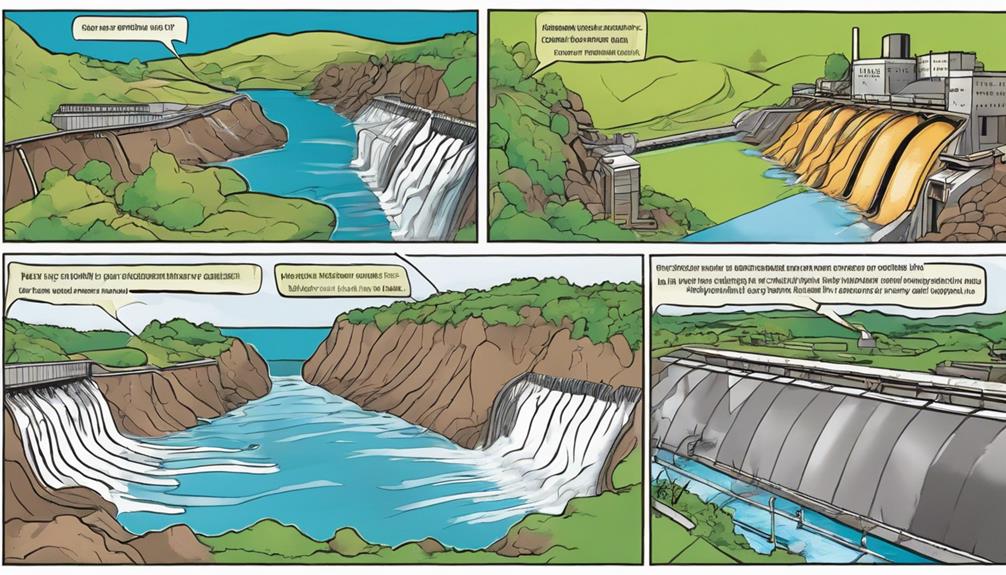
In analyzing the efficiency and capacity of hydroelectric power and geothermal energy, it's essential to understand their distinct performance metrics and operational characteristics.
- Hydroelectric power plants showcase high efficiency rates, typically ranging from 85-90%, making them a highly effective energy generation option.
- Geothermal energy plants, on the other hand, boast high capacity factors, often exceeding 90%, ensuring consistent energy output.
- Hydroelectricity can cater to large-scale power generation needs, offering a reliable and substantial energy supply to meet significant demands efficiently.
Both geothermal energy and hydroelectric power stand out for their reliable energy production capabilities, contributing to the stability of the energy grid.
Geothermal energy's versatility in providing both heating and electricity needs further enhances its appeal as a sustainable and efficient energy source.
Global Distribution Variance

Hydroelectric power's widespread global dispersion contrasts sharply with the more geographically limited presence of geothermal energy. Hydroelectric power is extensively utilized worldwide, with numerous countries relying on it for power generation. This renewable energy source offers large-scale capabilities, contributing significantly to global electricity production.
In contrast, geothermal energy is more regionally specific, commonly found in areas with volcanic activity where heat from the Earth's core can be harnessed. While geothermal energy shows promise for further development and utilization, its dispersion remains less widespread compared to hydroelectric power.
Both energy sources play a pivotal role in renewable energy initiatives, but the variance in their global dispersion patterns highlights the diverse geographical requirements for harnessing these sustainable energy options. As the world seeks to shift towards cleaner energy sources, understanding the global dispersion differences between hydroelectric power and geothermal energy is essential for effective renewable energy planning and implementation.
Utilization of Turbines
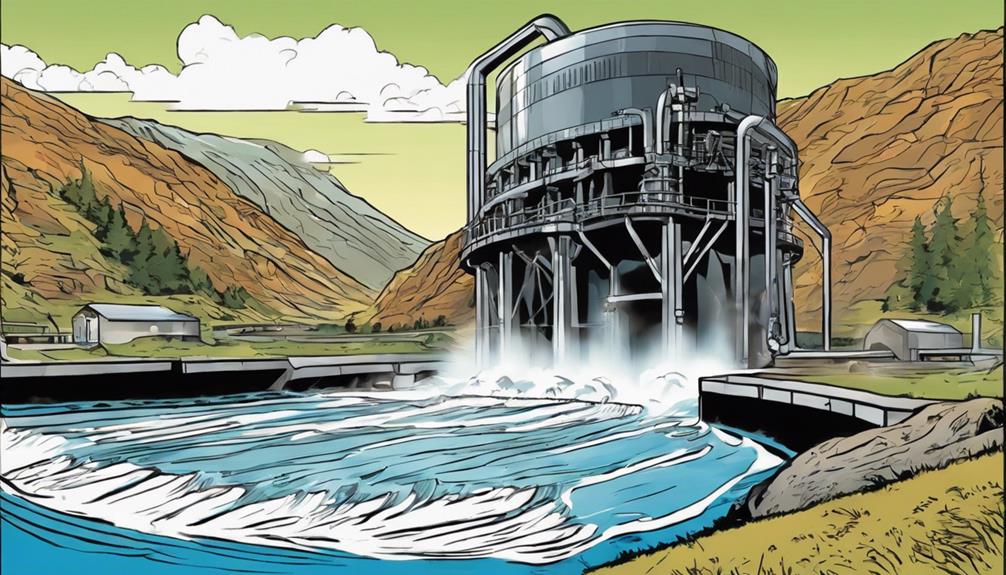
Turbines serve as essential components in both geothermal and hydroelectric power plants. They facilitate the conversion of natural resources into electricity. In geothermal power plants, turbines are driven by steam produced from underground heat sources. Meanwhile, in hydroelectric power plants, turbines are turned by the force of falling or flowing water in dams.
The design and operation of turbines in these plants are tailored to the specific characteristics of the energy sources they utilize.
Turbines are used in geothermal power plants to convert heat into electricity. They play a crucial role in this process. Similarly, turbines in hydroelectric power plants harness the energy of flowing water. Understanding turbine technology and efficiency is crucial for maximizing energy production in both geothermal and hydroelectric power plants.
Turbines play a crucial role in the conversion of natural resources, such as heat or water flow, into usable electrical energy in both geothermal and hydroelectric power generation.
Energy Production in the US
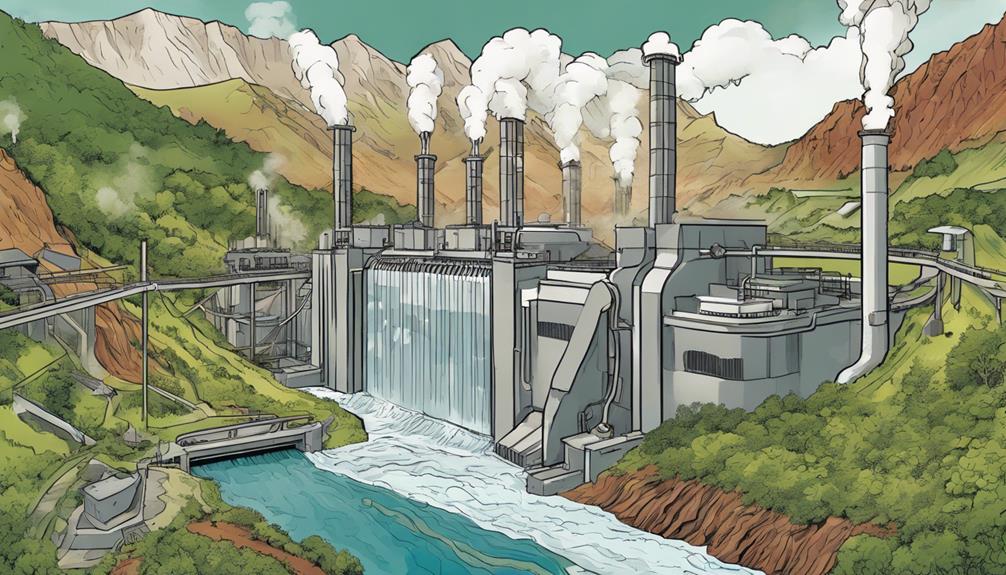
So, let's talk about energy production in the US. Hydroelectric power contributes about 7% of the total power produced, while geothermal energy only makes up less than 1%.
Turbines are key players in both types of power plants, helping to generate electricity efficiently.
US Hydroelectric Power Usage
Contributing to about 7% of total US electricity generation, hydroelectric power plays an important role in the country's energy production landscape. Hydroelectric power is a more prevalent energy source in the US compared to geothermal energy, with turbines being a vital component in both types of power plants.
- Hydroelectric power contributes 7% to the US electricity generation.
- Geothermal energy accounts for less than 1% of US electricity production.
- Turbines are essential for electricity generation in both hydroelectric and geothermal power plants.
Hydroelectric power plants harness the energy of flowing water to generate electricity, making them a reliable and sustainable source of power. The US has a long history of utilizing hydroelectric power, with many dams and facilities across the country contributing to the energy grid.
Geothermal Energy Contribution
Geothermal energy plays a minor yet growing role in the overall energy production landscape in the US, contributing around 0.4% to the electricity generated as of 2019. The United States boasts significant geothermal resources, mainly concentrated in western states like California, Nevada, and Utah.
Geothermal power plants in the US have a total capacity of approximately 3.8 gigawatts. This renewable energy source is gaining traction due to its reliability and consistency in power generation, particularly in specific regions of the country.
Despite its current modest contribution to electricity generation, the potential for geothermal energy to expand further remains promising as technology advances and more investment flows into this sector. As the US continues to diversify its energy mix and reduce reliance on fossil fuels, geothermal energy stands out as a sustainable option with room for growth in the nation's power generation portfolio.
Turbine Utilization in Plants
Turbines serve as vital components in both geothermal and hydroelectric power plants in the United States. They efficiently convert heat or the force of flowing water into electricity. In geothermal power plants, turbines play an important role in converting the heat from beneath the Earth's surface into electricity.
Similarly, in hydroelectric power plants, turbines are turned by the force of falling or flowing water, generating electricity through this mechanical energy conversion process.
Turbines are used in geothermal power plants to convert heat into electricity efficiently. Hydroelectric power plants also utilize turbines, but they're turned by the force of falling or flowing water.
Geothermal energy contributes to about 0.4% of total energy production in the US.
These facts highlight the significant role turbines play in the electricity generation processes of both geothermal and hydroelectric power plants in the US.
User Feedback and Ratings

You can share your thoughts and ratings on the comparison between hydroelectric power and geothermal energy in the provided section. While the average rating for contrasting these two energy sources isn't available, users are encouraged to provide feedback to enhance the discussion.
Although the number of votes on the answers is unspecified, your input can contribute to a better understanding of the topic. By participating and rating the contrast between hydroelectric power and geothermal energy, you can help other users navigate through the intricacies of these renewable energy sources.
Additionally, the option to explore similar questions is suggested, allowing for a more thorough exploration of the subject matter. Your feedback is valuable in shaping the discourse on hydroelectric power and geothermal energy, so don't hesitate to share your insights and ratings.
Chemistry Questions and Flashcards
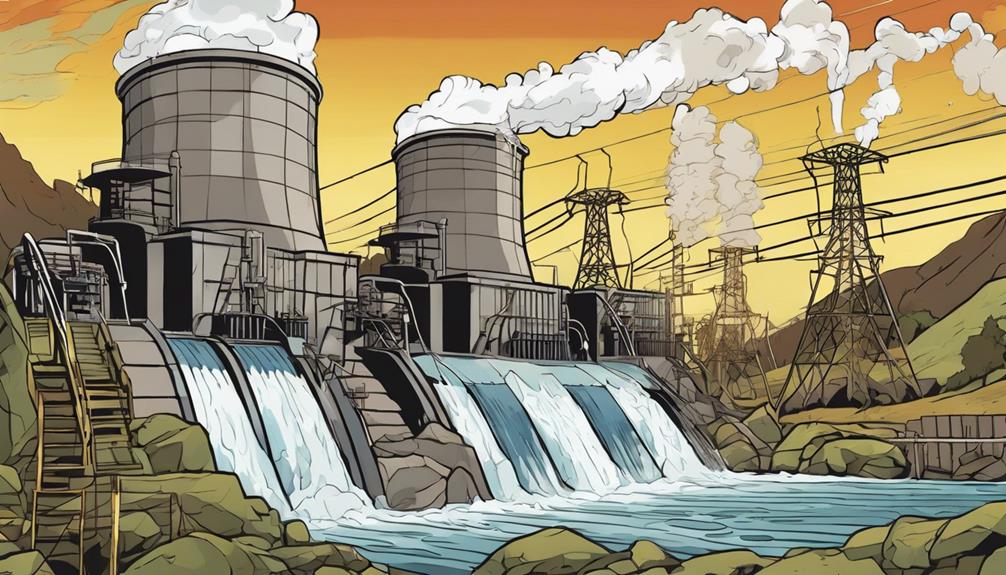
As you explore the world of chemistry, you'll encounter a plethora of questions and flashcards to enhance your understanding of pharmacodynamics, solubility, stability, molecular structures, and practical applications across various fields.
Immerse yourself in these topics through interactive flashcards and thought-provoking questions:
- Pharmacodynamics: Explore how drugs interact with the body to produce specific effects, plunging into mechanisms and impact.
- Alizarin: Discover the solubility of this compound in ethanol, revealing its potential as a versatile dye for diverse applications.
- Stability and Molecules: Plunge into the concepts of stability in chemical reactions and the fascinating world of molecules, understanding their structures and properties.
Chemistry's practical applications span across medicine, industry, and environmental science, showcasing the importance of understanding these fundamental concepts. Through engaging with questions and flashcards, you can deepen your knowledge and appreciation of the intricate workings of the chemical world.
Frequently Asked Questions
What Is the Difference Between Hydroelectric Energy and Geothermal Energy?
When you compare hydroelectric energy and geothermal energy, you'll see that hydro relies on water movement in dams, while geothermal harnesses Earth's heat. Hydro's impacted by weather, while geothermal's consistent. Hydro alters ecosystems; geothermal's eco-friendly.
What Is the Difference Between Geothermal Energy and Geothermal Power?
Geothermal energy is heat from the Earth's core, while geothermal power is the conversion of this heat into electricity. Geothermal energy is harnessed through wells or reservoirs, while geothermal power plants use turbines for electricity generation.
What Is a Benefit of Geothermal Energy Over Hydroelectric Energy?
Consider this: Geothermal energy grants you a consistent and climate-independent power source. Unlike hydroelectricity, it relies on Earth's warmth, not water flow. Embrace the environmental benefits and geographic limitations it offers over hydroelectric power.
What Is the Difference Between Geothermal and Hydrothermal Energy?
To distinguish between geothermal and hydrothermal energy, note that geothermal taps into Earth's heat, while hydrothermal relies on water movement. Geothermal is consistent regardless of weather, with minimal impact, limited geographically. Hydrothermal depends on water flow, influenced by weather, with wider distribution.
How Does Hydrogen Sulfide Play a Role in Geothermal Energy Production, and How Does It Differ from Hydroelectric Power?
Hydrogen sulfide in geothermal energy plays a crucial role in power production. It is a natural byproduct of geothermal processes and is used to generate electricity. In contrast, hydroelectric power harnesses the energy of moving water to produce electricity, relying on water instead of geothermal gases like hydrogen sulfide.
Conclusion
To sum up, while hydroelectric power relies on water to generate electricity, geothermal energy harnesses the Earth's heat. The environmental impacts, efficiency, and global distribution of these two energy sources contrast greatly.
From turbines to energy production, each has its own unique advantages and challenges. As you consider the best option for your needs, remember to weigh all factors carefully and make an informed decision.
